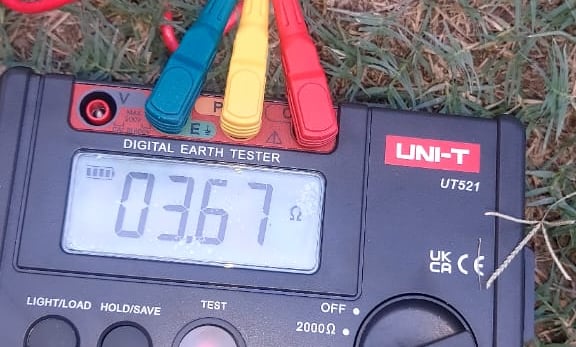How Understanding Net Metering : How to Sell Your Extra Power
In this blog you'll find out how to use your solar system to your advantage, any excess energy going back into your wallet.
MK.
2/27/20252 min read


Net metering is a billing mechanism that allows you to feed excess electricity generated by your solar panels back into the grid. In simple terms, when your system produces more power than you’re using, the extra energy is sent to the grid, and your utility company credits you for it. Later, when your system isn’t generating enough—like during the night or on cloudy days—you draw power from the grid, using those credits to offset your bills.
How Does It Work?
Here’s the process in a nutshell:
Generation: Your solar panels capture sunlight and convert it into electricity. On sunny days, they often produce more energy than you need.
Feeding the Grid: When your energy production exceeds your consumption, the surplus is automatically fed back into the grid.
Credit Accumulation: Your utility company tracks this surplus as credits on your account. Essentially, your meter runs backward when you’re generating excess power.
Drawing from the Grid: At times when your solar system isn’t producing enough—like at night—these credits are applied to reduce your electricity bill.
The key here is that net metering not only makes your solar investment more efficient but can also transform it into a revenue-generating asset over time.
The Benefits of Net Metering:
Financial Savings and Earnings
One of the biggest advantages of net metering is the potential to reduce your electricity bills significantly. In some cases, if your system is properly sized and your energy consumption patterns align well with your production, you might even see a near-zero bill. That means more money stays in your pocket every month.
Energy Independence
Net metering provides an added layer of energy security. By offsetting your consumption with credits from your surplus generation, you’re less reliant on the grid. This leads to a more stable energy supply, even when the grid faces outages or instability.
Environmental Impact
By feeding excess energy back into the grid, you’re not only benefiting yourself financially but also contributing to a cleaner, more sustainable energy ecosystem. It helps reduce the need for fossil-fuel-based power generation, which is a win for the environment.
How to Get Started with Net Metering
If you’re considering net metering, the first step is to ensure your solar installation is eligible. Most modern solar systems are designed to work with net metering policies, but it’s important to check with your local utility provider for specific guidelines and requirements. At Indus Clean Energy, we help you navigate these details through comprehensive feasibility studies and site assessments, ensuring that your system is optimized for both efficiency and financial benefit.
Addressing Common Concerns
You might be wondering, “Will I see significant savings?” or “Is the process complicated?” The answer is that, with a well-designed system and proper maintenance, net metering can dramatically lower your energy costs. Most of our clients find that their surplus energy credits help to significantly offset, if not eliminate, their monthly bills. Plus, our team is here to guide you through every step—so you don’t have to worry about the technicalities.
Take Control of Your Energy Future
Net metering is more than just a billing mechanism—it’s a powerful tool that transforms your solar energy system into an active asset. By turning excess power into credits, you gain financial rewards, increased energy independence, and the satisfaction of contributing to a greener future.
Ready to explore how net metering can work for you? Contact us today for a free consultation, and let’s work together to unlock the full potential of your solar investment. Your path to a smarter, more sustainable energy future starts now.
Solar PV Projects desiging, installation, & monitoring
Providing bespoke solar solutions across Islamabad & Karachi.
queries@induscleanenergy.com
Telephone: +92-21-34394311
© 2025. All rights reserved.
Mobile No:
+92 334 8824555
+92 321 5393007
Indus Clean energy PVT limited
Head Office: 116-D, Ground Floor, Block 2, PECHS, Karachi
Regional Office: Office no.6, 1st floor, AL-Rehman Plaza, College Road Rawalpindi.
Hyderabad Office: IM Enterprise, Shah Makki Road, Kacha Qilla, off Madina Masjid, Hyderabad.
+92 370072343
